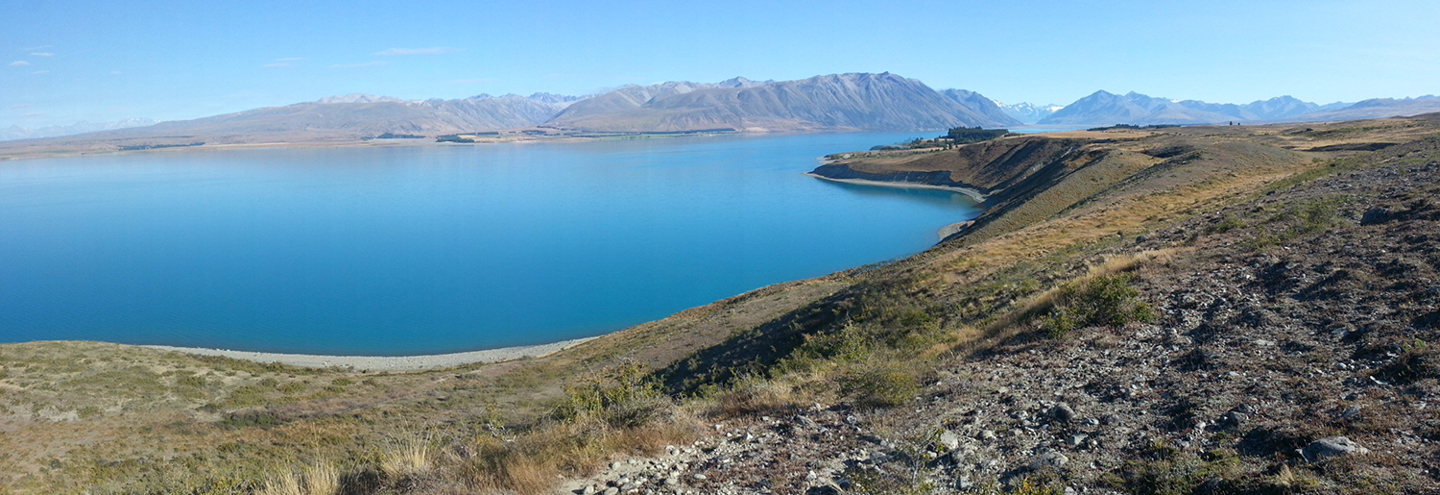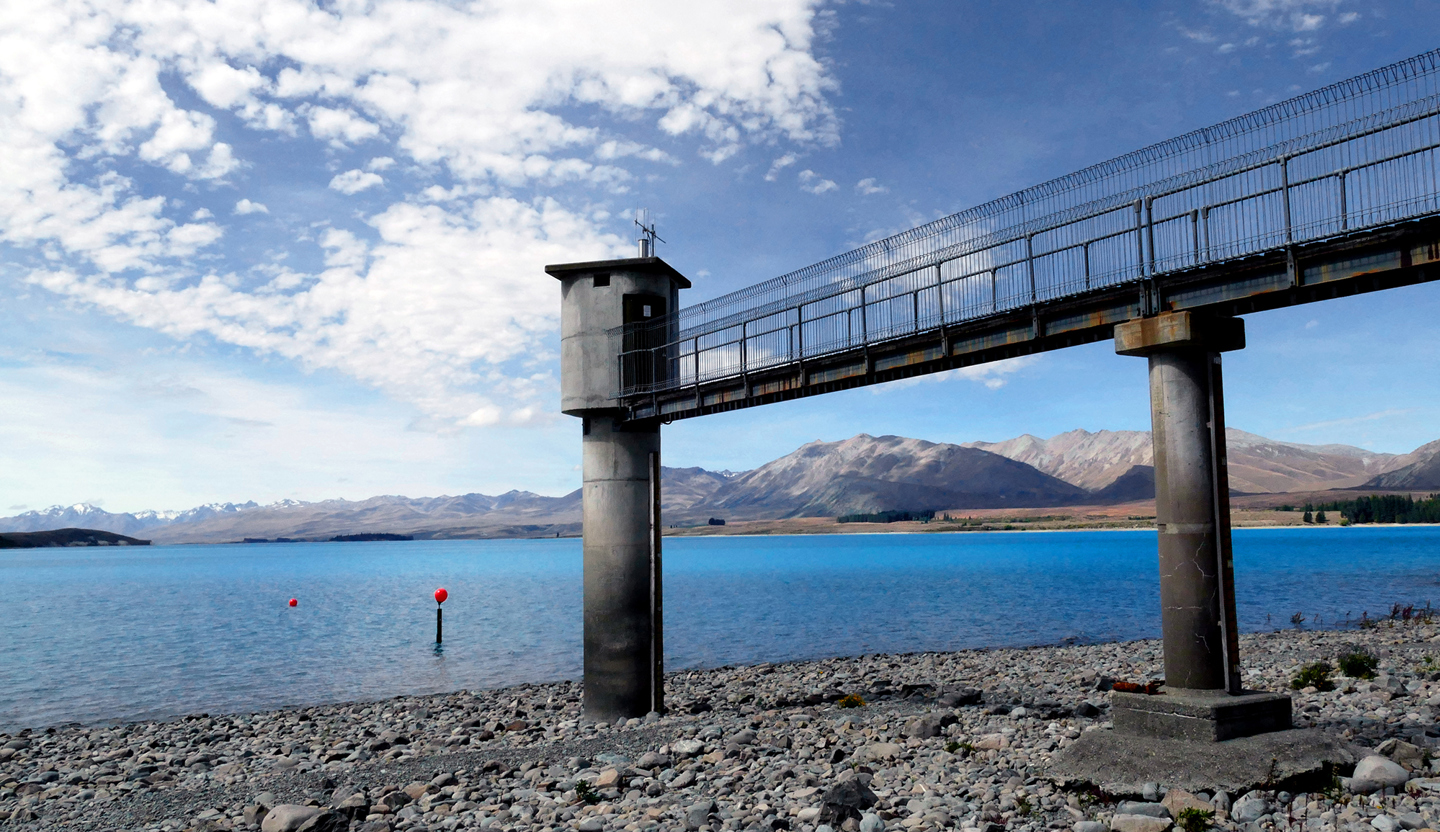
Lakeshore headscarp of a large landslide on the eastern shore of Lake Tekapo/Takapō (Source: Joshu Mountjoy, NIWA 2018)
A lot of work has gone in to understanding the geology of the Mackenzie Lakes, and particularly Lake Tekapo/Takapō, to try to establish the likelihood of the lakes posing a hazard in the event of an earthquake. In episode 3 I spoke to Helen Jack – Geological Hazard Analyst with Environment Canterbury and Dr. Joshu Mountjoy Marine Geologist with NIWA, who explained how the landscape surrounding the lake and even the lake bed itself can be assessed for signs past and possible future landslides that may have caused lake tsunami.

Lakeshore headscarp of a large landslide on the eastern shore of Lake Tekapo/Takapō (Source: Joshu Mountjoy, NIWA 2018)
But how do we understand from that scientific data what the most likely lake hazard outcome might be? Helen explained the key findings:
"The work showed that the most likely scenario was either a landslide into the lake from the northern end or a delta collapse from the Godley River Delta or the Cass River Delta. The most likely trigger for that sort of event would be a large earthquake – either from the Alpine Fault, or a large local earthquake such as on the Ostler Fault which is near Twizel.” – Helen Jack
Something that has become very apparent to me as I’ve spoken to these experts is the vast multitude of unknowns and variables that come into play when trying to model the possible outcome of a natural hazard event.
The amount of ground shaking will depend on many factors, such as the strength of the earthquake itself, proximity to the centre of the earthquake, and underlying geology. Then the size of a potential lake tsunami would be influenced by the amount of material sliding into the lake, the speed of that movement and the depth of the lake, amongst other factors.

Meridian Energy's depth gauge at Lake Tekapo/Takapō (Source: Bernard Spragg, Flickr, 2015)
As I discussed with Helen, another consideration with Lake Tekapo/Takapō is its 9-metre operating range. It’s virtually impossible to anticipate what the outcome of a landslide might be if the depth of the lake can vary by an amount as significant as that. As a result, Helen’s advice is to simply maintain an awareness of our surroundings and move away from any body of water in the event of a large earthquake:
"It’s important to remember that the most likely trigger for a large tsunami would be a big earthquake, and so you’d be dealing with the effects of that big earthquake as well as the tsunami. That’s not to say that smaller tsunami should be underestimated, as they do create really strong currents and surges in the water and on the lake shore, so we still want people to stay off the lake shore so that they aren’t injured. But the chance of a large tsunami coming up and inundating a lot of land is relatively small.” – Helen Jack
That makes perfect sense: if there were to be a large tsunami, then that would have resulted from a large earthquake. It is likely that the event would have had numerous other impacts in addition to the movement of the lake water.
So, the final step of my journey to understand the lake hazards in the Mackenzie is probably the most important – I need to find out what has been done so far to help us, as communities, to prepare for a large earthquake, and what we can do on a personal level to keep ourselves, our families and businesses as safe as possible. I’ll be speaking to Phill Mackay – Emergency Management Officer and part of the Canterbury Emergency Management Group – to find out more.